| courbe suivante | courbe précédente | courbes 2D | courbes 3D | surfaces | fractals | polyèdres |
HOLDITCH CURVE
| Curve studied by Holditch in 1858, H.
Benitez in 1980, et Monterde
& Rochera in 2017.
Animations below made by Alain Esculier. |
| To obtain the Holditch curve of |
| The Holditch curves associated with a given curve These curves are cases of glissettes, the two points A and B "sliding" on the curve |
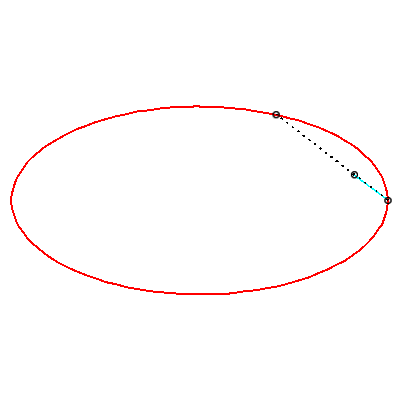 |
Obtaining the equation of the Holditch curve is usually
difficult, but here are two simple cases:
| For an ellipse: Polar equation : For an hyperbola, change the sign in front of y². |
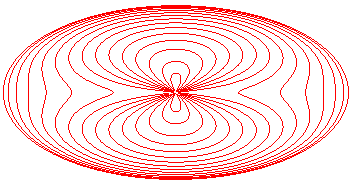
Loss of convexity for c > p = b²/a. |
| For a parabola: Loss of convexity for c > p . |
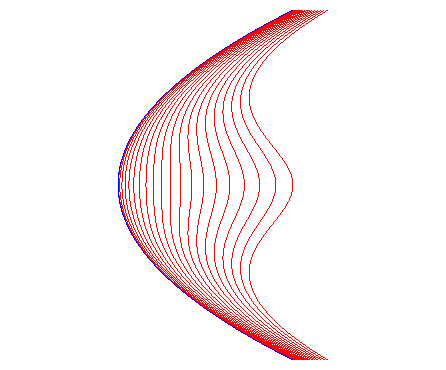 |
Here is the evolution of the complete Holdich curve of
the ellipse, for a plotter point located between A and B,
out of the center, rope length 2c. For ,
it is formed of two continuous curves symmetrical with respect to the axis
of the ellipse.
Each curve is ...
| convex for |
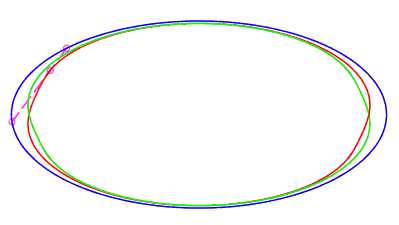 |
| closed without a double point, traversed in a movement
without retrograde phase, where the rope returns to its starting point
after having made a complete turn, for |
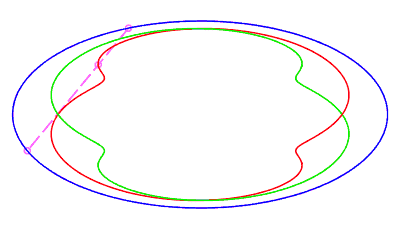 |
| closed without a double point, traversed by a movement
with retrograde phase, where the rope returns to its starting point after
having made a complete turn, for The number d is the minimum half-length of a chord whose end is perpendicular to the ellipse (instant ending the retrograde phase, see the animation opposite). |
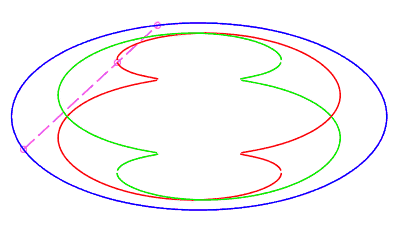 |
| eight shaped, traversed by a movement with a retrograde phase where the rope returns to its point of departure without rotation, for b < c < a. | 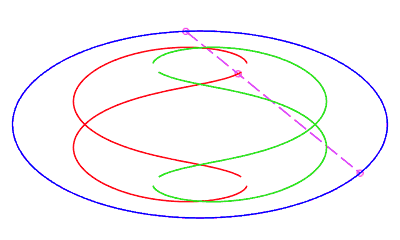 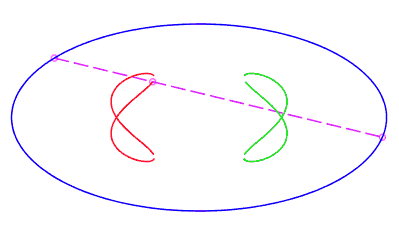 |
| Animation of the deformation of the complete curve for 0 < c < a. |
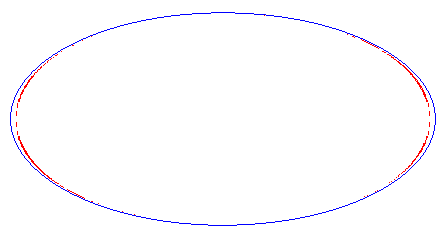 |
| courbe suivante | courbe précédente | courbes 2D | courbes 3D | surfaces | fractals | polyèdres |
© Robert FERRÉOL
2019